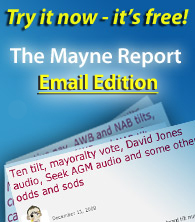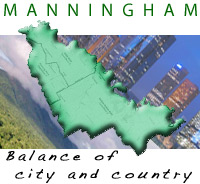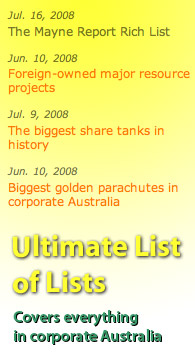Chronology of corporate law change in Australia
February 7, 2025
Here is a chronology of material corporate law, tax and capital raising legal changes in Australia which have impacted investing and governance on the ASX. If we've missed any big ones, please email stephen@maynereport.com
Late 1970s: After Wesfarmers grabbed control of bigger rival CSBP, the law was changed to force companies to make an offer for all shares, not just a few. See 2010 James Graham interview in The AFR.
September 1985: Australia introduces a capital gains tax which applies to shares.
1987: dividend imputation system introduced to end the double taxation of dividends.
1990: The states cede power over corporate affairs to ASIC.
1991: CSR offers the first SPP at $2,400 per holder when the maximum was $3000 per investor.
July 1992: Federal Government introduces compulsory super.
1998: capital gains tax rate for super funds reduced to 10%.
September 1999: Howard Government introduces 50% discount on capital gains tax for assets held for longer than 12 months.
October 1999: the ASX demutualised and floated on itself, enriching its original 626 members who only paid $25,000 to join Australia's most exclusive club.
1999: Takeovers law was amended with the introduction of the Takeovers Panel.
2000: Franking credits system amended to allow for cash refunds of credits if the taxpayer is not paying any tax.
March 2000: executive pay disclosure changed such that the top 5 execs must have their full pay disclosed. This ended the anonymous bands system which still prevails in many govt agencies and not for profits. See AFR piece.
2001: S249P amendment came into effect allowing members to discuss the general operations of a company at an AGM (not just the accounts) and allowing them to have a 1000 word member statement distributed to all shareholders if 100 shareholders petition for it.
September 2002: ASIC lifted the SPP cap from $3000 to $5000.
2003: HIH Insurance collapse and subsequent royal commission lead to this series of reforms through the CLERP 9 process, a lot of which related to auditor independence.
2003: Platinum Asset Management failed in a Queensland Supreme Court challenge against Xstrata's scheme of arrangement acquisition of MIM, effectively opening the door to most future deals being done by way of a scheme requiring approval from 75% of voted stock and 50% of voting shareholders.
July 2005: introduction of the non-binding advisory vote on remuneration report. See Fairfax feature.
2007: Costello reforms commence where super payouts for those over 60 became tax free, further increasing the tax preferred nature of super.
February 2009: ASIC lifted the SPP cap from $5,000 to $15,000 as a
GFC reaction and also allowed rights issues with just a "cleansing statement" rather than a full prospectus. See Belinda Gibson speech.
November 2009: after excessive payouts following the GFC, amendments were introduced requiring shareholder approval for any termination payment exceeding 12 months base salary.
2010: after a recommendation from Allan Fels, the Labor Government ends the "no vacancy" rule. Recommendation 1 read: "Where, in an election of directors at an annual general meeting (AGM), the board seeks to declare no vacancies and the number of directors is less than the maximum provided in the company's constitution, approval should be sought from shareholders by way of ordinary resolution at that AGM." The no vacancy rule was used against Stephen Mayne in many of these early board tilts.
June 2010: ASIC introduced a requirement for short sellers to report their positions to ASIC.
2011: introduction of the two-strikes rule on remuneration voting.
March 2011: Origin Energy and Merrill Lynch pioneer the first PAITREO capital raising - see full list.
2013: Abbott Government abolished CAMAC - the Companies and Markets Advisory Committee.
March 2015: ability for 100 members to call an EGM was removed after Get-up's campaign against Woolworths on pokies.
August 2019: the maximum SPP was doubled to
$30,000.
March 2020: ASIC temporarily expands placement capacity from 15% to 25% as a COVID measure.
April 2020: ASIC provides relief allowing companies to temporarily hold fully virtual AGMs due to lockdowns. This later becomes allowable under the law, provided that it is approved in a company's constitution. Many companies failed in bids to change their constitutions to allow for this.
June 2021: ASX listing rules changed requiring companies to publicly announce the deadline for external board nominations ahead of time, similar to the long-standing requirements in New Zealand.
October 2022: off-market buyback laws changed to close the rort whereby parts of a buyback could be deemed to be a fully franked dividend.
Copyright © 2025 The Mayne Report. All rights reserved






















